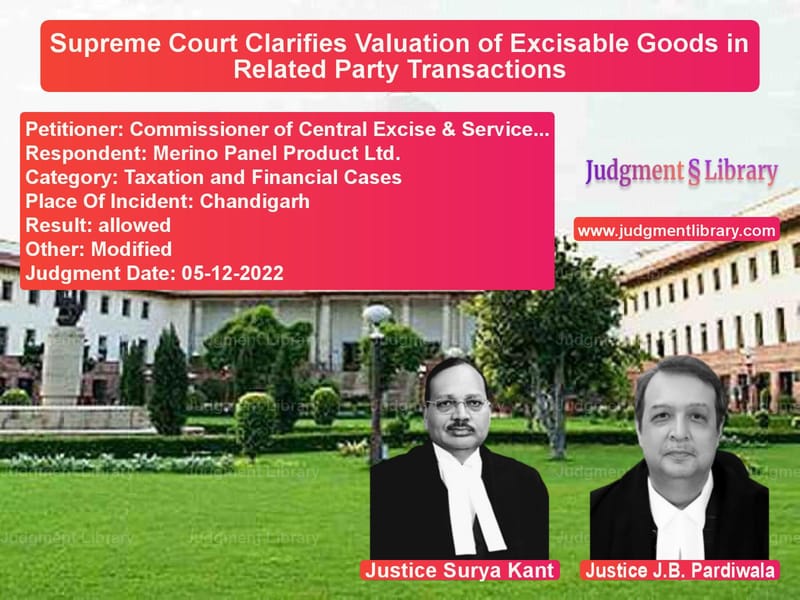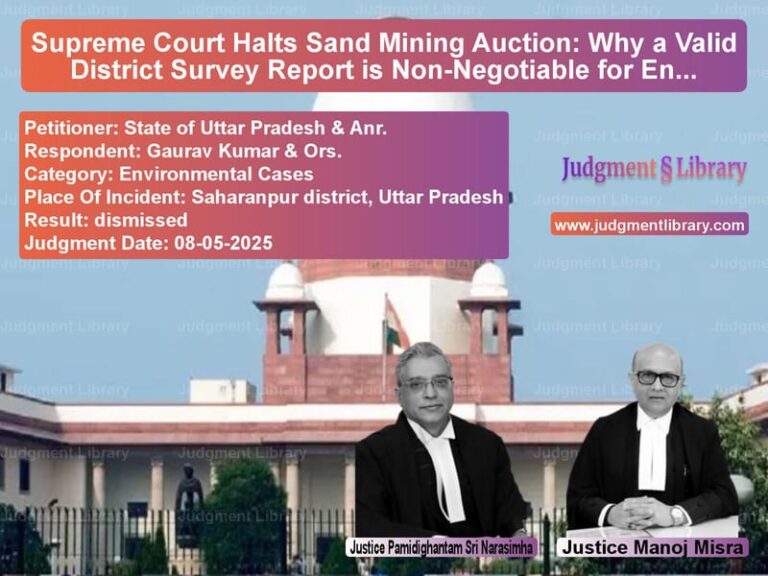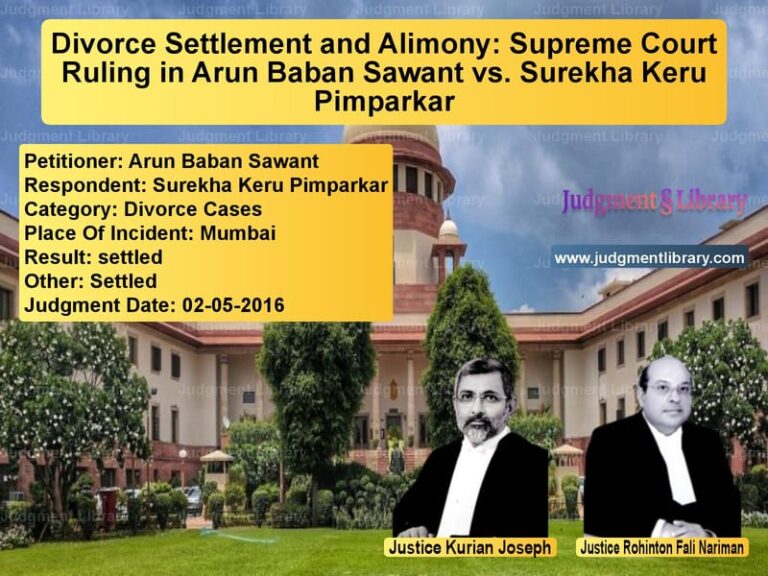Supreme Court Clarifies Valuation of Excisable Goods in Related Party Transactions
The Supreme Court of India recently ruled in the case of Commissioner of Central Excise & Service Tax, Rohtak vs. Merino Panel Product Ltd., addressing the methodology for valuing excisable goods sold to related parties under the Central Excise Act, 1944. The case revolved around whether the valuation of such sales should be based on independent transactions or an alternative method.
The Court set aside the Customs, Excise and Service Tax Appellate Tribunal (CESTAT) order that favored the assessee, ruling that the valuation method used by the revenue was in line with legal provisions.
Background of the Case
The dispute arose after an audit of Merino Panel Product Ltd., a manufacturer of decorative laminates, revealed that the company was selling products to both independent buyers and related entities—Merino Industries Ltd. (MIL) and Merino Services Ltd. (MSL)—at different prices.
The key timeline of events was as follows:
- FY 2009-10 & 2010-11: An audit uncovered that sales to related parties were undervalued compared to independent buyers.
- 2011: A show cause notice was issued, alleging suppression of assessable value and invoking a five-year extended limitation period.
- 2017: CESTAT, Chandigarh, set aside the demand, ruling that the revenue had incorrectly applied valuation methods.
- December 5, 2022: The Supreme Court reversed the CESTAT ruling and upheld the valuation method used by the revenue.
Arguments by the Appellant (Revenue)
The revenue authorities challenged the CESTAT decision, arguing:
- Sales to related parties were undervalued compared to independent buyers, reducing excise duty liability.
- The valuation method applied under Rule 11 of the Central Excise Valuation (Determination of Price of Excisable Goods) Rules, 2000 was appropriate.
- The assessable value should be based on sales made to independent parties.
Arguments by the Respondent (Merino Panel Product Ltd.)
The assessee countered:
- The CBEC Circular dated 01.07.2002 directed the use of Rule 11 read with Rule 9 for related party transactions.
- The revenue misinterpreted valuation rules by applying independent sales prices directly to related party transactions.
- The five-year limitation period was wrongly invoked as there was no suppression of facts.
Supreme Court’s Judgment
The Supreme Court ruled in favor of the revenue, holding:
- Sales to independent buyers can be used to determine the assessable value of sales to related parties.
- “Where normal price is available from independent transactions, it can be used as a benchmark for valuation.”
- The revenue correctly applied Rule 11 read with Section 4(1)(a) of the Central Excise Act, 1944.
- The extended limitation period under Section 11A(4) was validly invoked due to the deliberate undervaluation.
Key Precedents Cited
The Supreme Court relied on multiple landmark cases, including:
- Commissioner of Central Excise, Mumbai vs. FIAT India (2012): Established that “normal price” is the basis for excise duty valuation.
- SACI Allied Products vs. CCE (2005): Held that when sales are made to both independent and related parties, the independent sale price can be used.
- Ratan Melting & Wire Industries (2008): Clarified that CBEC circulars are binding on the revenue but not on courts.
Impact of the Judgment
This Supreme Court ruling has significant implications:
- Standardizes valuation rules: Ensures that excise duty liability is fairly calculated.
- Prevents revenue loss: Deters companies from undervaluing related party transactions.
- Clarifies limitation periods: Reaffirms that suppression of facts justifies extended limitation periods.
Conclusion
The Supreme Court’s ruling in Commissioner of Central Excise & Service Tax, Rohtak vs. Merino Panel Product Ltd. ensures fair excise duty valuation in related party transactions. The judgment prevents companies from reducing tax liabilities through artificial undervaluation and reinforces consistency in applying valuation rules.
The verdict sets an important precedent for future excise duty disputes, ensuring compliance with taxation laws and upholding revenue interests.
Petitioner Name: Commissioner of Central Excise & Service Tax, Rohtak.Respondent Name: Merino Panel Product Ltd..Judgment By: Justice Surya Kant, Justice J.B. Pardiwala.Place Of Incident: Chandigarh.Judgment Date: 05-12-2022.
Don’t miss out on the full details! Download the complete judgment in PDF format below and gain valuable insights instantly!
Download Judgment: commissioner-of-cent-vs-merino-panel-product-supreme-court-of-india-judgment-dated-05-12-2022.pdf
Directly Download Judgment: Directly download this Judgment
See all petitions in Tax Evasion Cases
See all petitions in Customs and Excise
See all petitions in Judgment by Surya Kant
See all petitions in Judgment by J.B. Pardiwala
See all petitions in allowed
See all petitions in Modified
See all petitions in supreme court of India judgments December 2022
See all petitions in 2022 judgments
See all posts in Taxation and Financial Cases Category
See all allowed petitions in Taxation and Financial Cases Category
See all Dismissed petitions in Taxation and Financial Cases Category
See all partially allowed petitions in Taxation and Financial Cases Category







